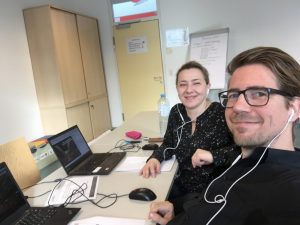Lessons learnt: Participation and completion
Based on the implementation of 3 Pilot MOOCs, we present 14 (out 50) lessons learnt in the area of increasing participation and completion rates in Business MOOCs in this section:
Participants often have many restrictions on their time. To help learners study effectively:
- Consider your target audience(s) when setting the launch/start date of your course.
- Required time for MOOCs and specific activities is hard to estimate upfront, but important for your learners.
-
Different course tracks/pathways to reach different levels of knowledge are appreciated, but may lead to confusion as well. Different tracks/pathways must be clearly structured for learners.
- It is also difficult to reach an adequate level of “strictness” with deadlines (soft vs. hard deadlines) to not scare off learners. Do you want to grant soft deadline to make it easier for learners with busy schedules, or do you go for strict deadlines to award those which take the deadlines serious?
- It is important to not only promote enrolment, but also participation/completion from the beginning, presenting learners with benefits/take-aways of completing the whole course.
- However, some learners do not come with the intention to complete the MOOC, for example, they might just be interested in a particular section/week of the course, or in “lurking” (e.g. to see how the MOOC is done)
- It is important for learners to be able to track their progress in a course. It also provides the course creators with information about how the course was being used (note, this is only possible if learners have to sign-in for the course and consent to be tracked).
- Well-designed, “ice-breaking” activities are key for active participation and learner engagement. Learners can get to know each other and connect more quickly (in a set timed MOOC, not applicable for a self-paced MOOC).
- Learning in teams/teamwork can be a challenge (online and f2f), because of differing levels of activity, knowledge and engagement (e.g. free-rider problem). Moderation helps for less active learners, but hardly turns inactive users into active ones. It is critical how the assignment and assessment is designed (e.g. peer-review within and between teams). Next, teamwork is also difficult for self-paced MOOCs – does one monitor forums for month after month, or just offer active forum contributions from moderators during a set time?
- Languages: Sometimes (in some regions) this can be a challenge. It can be a trade-off between facilitating access for more people (by providing several languages), but at the same time decreasing the cross-cultural exchange within the MOOC (by having separate language communities).
- Multi-lingual courses require a lot of additional resources (not only translation of content, also multi-lingual moderation, platform and course design, technical support etc.). Publishing content with an open license offers the opportunity for translation into other languages.
- Localising a MOOC by offering opportunities to reflect on the local context of the learners, for example, by designing activities where participants share local examples, makes content more relevant and potentially more engaging.
- Certificates are motivating for some learners, for others not (approximately 50:50 over all MOOCs). If the certificate is officially recognized by a company or university, this number significantly increases.
- Be careful with mandatory participation (e.g. if you force students or employees to take a MOOC). If you did want all employees to participate in a MOOC, provide them real incentives to do so (e.g. provide them time).

